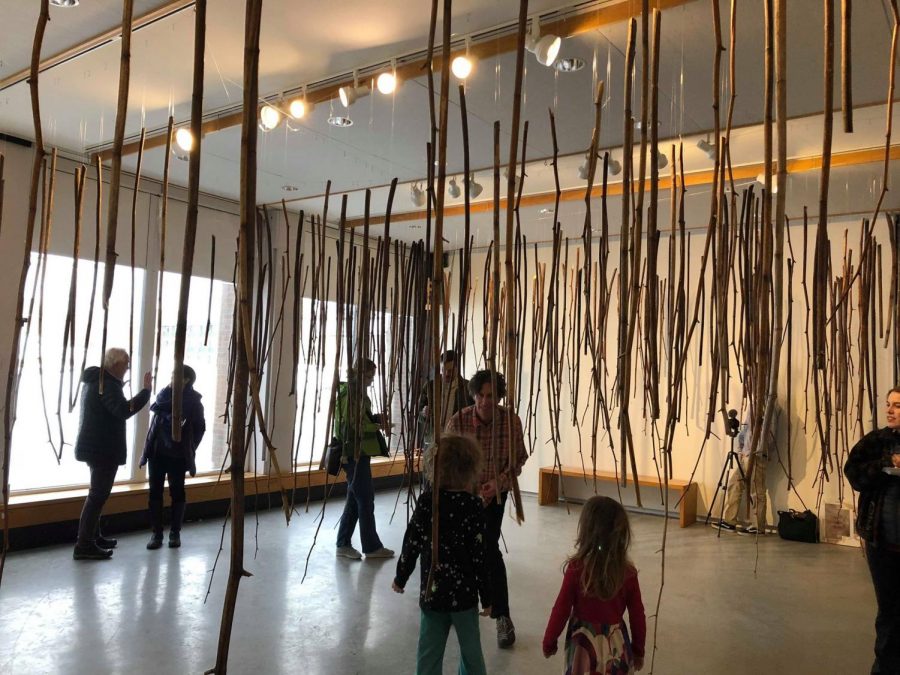Strange sounds abound in the Rural Noise Ensemble
Visitors walk through NotWeed in the Julian Scott Gallery.
For one small artist collective in rural Vermont, making noise is all in a day’s work.
The Rural Noise Ensemble, formed by Doctor Otto Muller of Goddard College and Sean Clute, assistant professor of fine arts at NVU-Johnson, uses unconventional means to explore sound as a medium and delve into the topic of what it means to be rural.
Most recently, the collective has been working on a project known as “Notweed.” This installation consists of a room filled with 300 pieces of suspended Japanese Knotweed of differing lengths that members harvested from around the Woodbury mountains.
It also features a digital soundscape that is triggered by the amount of ambient noise generated by the knotweed. The more disturbance in the display, the less noise that is produced from the four speakers in the gallery.
The idea of this multi-media approach was to challenge the ideas of localism, foreignness and invasion. The stalks and the sounds they created were used as a means of reflection on colonialism and prejudice.
The installation, along with the other work that the collective has done, has been successful enough to attract attention in the world of electronic art. This year, both Clute and Muller have been invited to speak at the 2020 International Symposium on Electronic Art in Montreal. There, Muller and Clute will discuss their work on the “Notweed” installation as part of the selection of artist talks available at this year’s event.
Because the ISEA is one of the largest conferences in electronic art, this is a big step for the small collective. The Rural Noise Ensemble was invited to participate along with representatives from 40 different countries.
It’s not all big art shows for the collective, though. Much of their work has been done on a small community scale.
“The Rural Noise Ensemble is a collective of Vermont based artists, musicians and makers that employ the aesthetics of noise as a critical framework for interrogating rurality,” the website biography reads. “The group uses scrap wood and rusty nails, interactive electronics, amateur performers and whatever else is present to make sound; to decode and disrupt a dialogue of this thing called the rural.”
When perusing the group’s website, there are plenty of pictures to show off the collective’s approach to making their art. In “The Montpelier Project,” one of the collective’s works, there are images of children blowing into a rubber hoses to elicit sound or banging together pots and pans with smiles on their faces.
Another project, “Winter,” uses a wide array of media formats from the auditory to hand-drawn animations and interactive video. The work embodies the frigid chill of winter and works to celebrate Wilson Bentley, affectionately called Snowflake Bentley, for his work being the first person to photograph individual snowflakes in 1885.
While current restrictions on gatherings limit the ability for people to view installations and art projects such as those created by Muller and Clute in the Rural Noise Collective, there will surely be more to come.
Involvement in the International Symposium on Electronic Art is keeping the collective in the business of making noise, even if they must do so remotely given the travel ban in place between Canada and America.

Senior, BFA Creative Writing major from Craftsbury, VT.
Resident Punk Scientist and Basement Medicine Web Wrangler.
I love science and writing, and...



